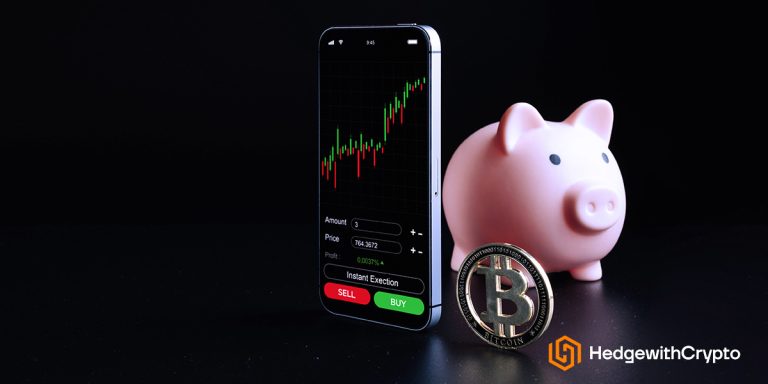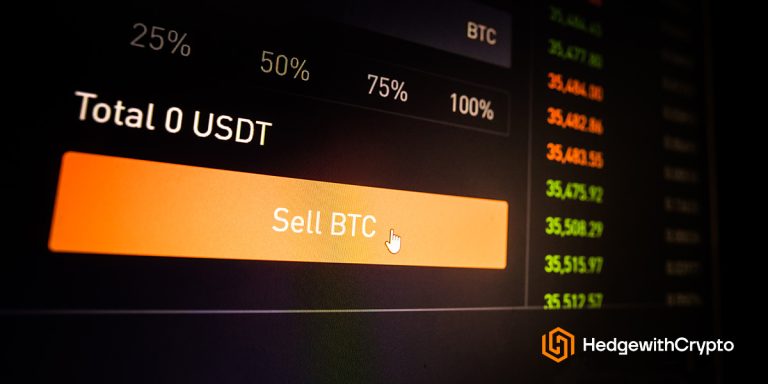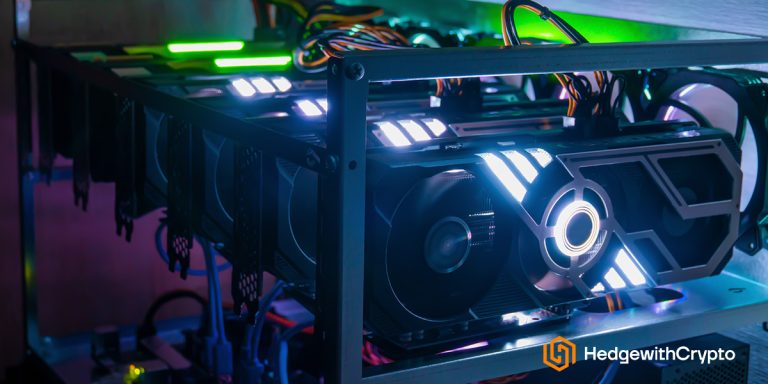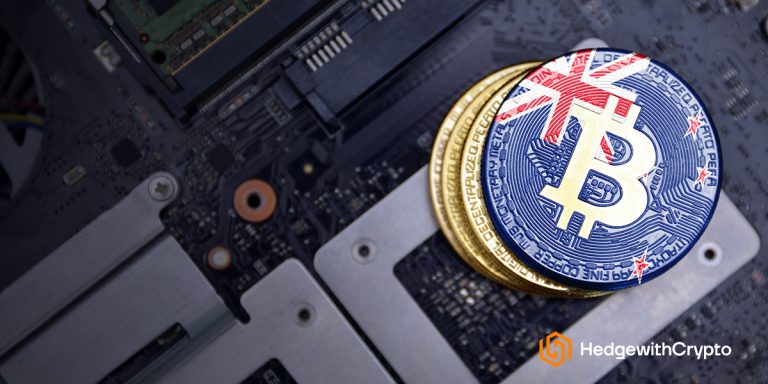This Is How You Can Mine Bitcoin At Home
TABLE OF CONTENTS
Here's a quick guide on how you can start mining Bitcoin:
- Step 1 – Determine profitability.
- Step 2 – Get a mining rig.
- Step 3 – Download and install mining software.
- Step 4 – Create a Bitcoin wallet.
- Step 5 – Connect to a mining pool.
- Step 6 – Mine Bitcoin.
Full Guide To Bitcoin Mining At Home
Bitcoin mining provides an excellent way to accumulate BTC while also supporting the Bitcoin blockchain. However, before investing in expensive hardware, it is important to understand the steps required to mine Bitcoin and, therefore, ensure that the endeavor is a profitable one.
Step 1. Assess The Viability & Costs Of Mining Bitcoin
To assess the viability of mining Bitcoin, an accurate estimate of costs needs to be acquired. This will involve obtaining cost estimates for mining hardware, electrical consumption, and mining software. Using the price of BTC, these costs can then be used to estimate profitability.
Mining Hardware
Sustainable Bitcoin mining now requires high-powered computers that are specifically designed for the process. Known as ASIC miners, these machines are now the most common piece of hardware that allows individuals to stand a chance of earning BTC block rewards. The more powerful the ASIC miner, the more likely it will return BTC rewards. However, the most powerful and best hardware for mining Bitcoin also requires the largest upfront investment.
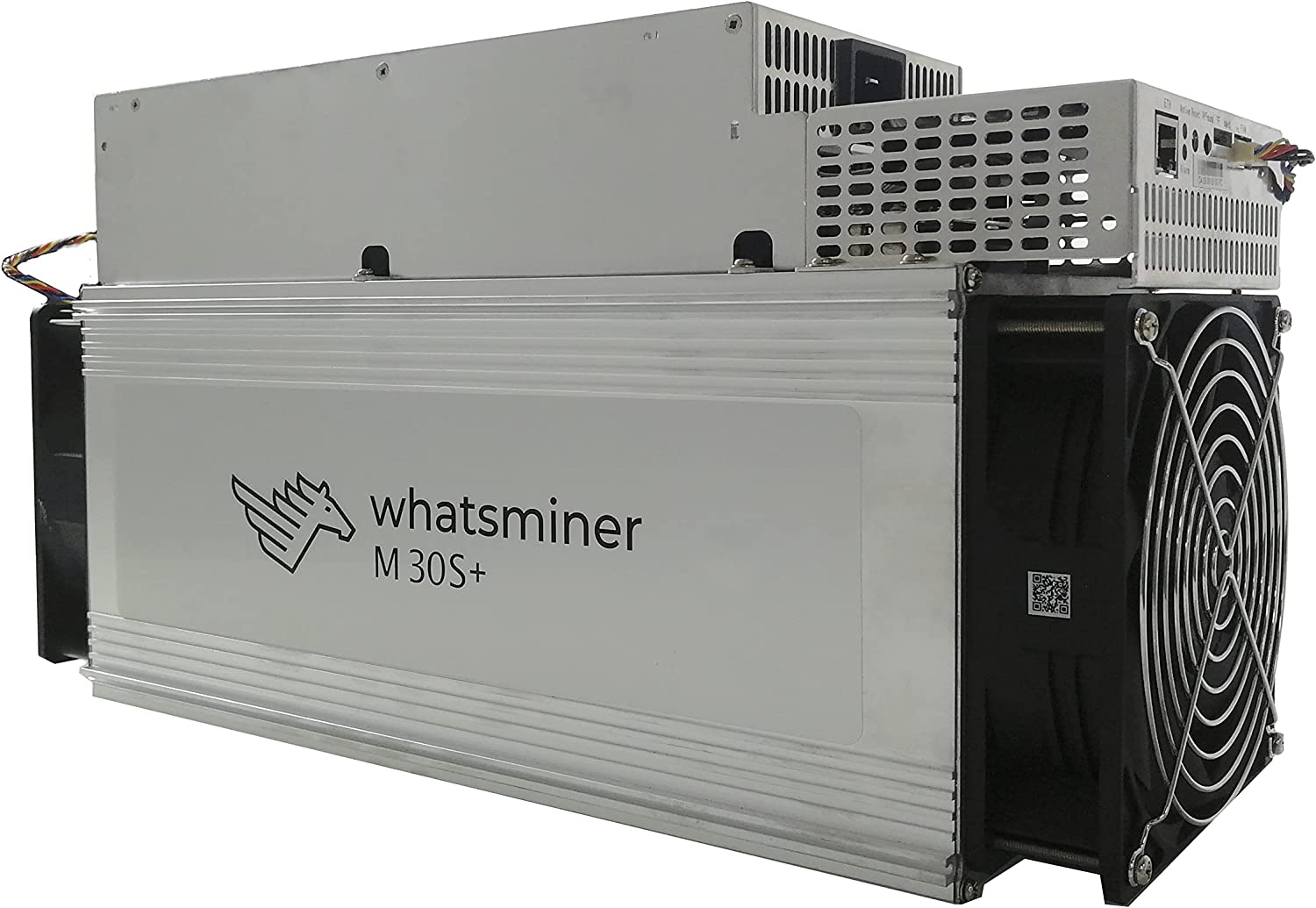
Alternatively, if acquiring an entire machine is not feasible, another option for individuals is to acquire several GPUs. Although GPUs are not as powerful as ASIC miners, several GPUs can be combined over time to improve computing power. Unlike acquiring a ready-to-go machine, this would require a mining rig to be built either from scratch or from a PC that is already operational.
Due to the high turnover of mining equipment, there are several options for buying secondhand equipment, which can help save on hardware costs. If purchasing secondhand hardware, remember to ensure that the equipment is being sold by a reputable dealer.
With both ASIC and GPU mining hardware options available, a new miner will need to decide which option best serves them. At the time of writing, top-of-the-range ASIC units, such as the Antminer S19 Pro, can cost over $6,000. These units produce 110 Th (Terra hashes)/s. In comparison, one of the cheapest GPU units, the EVGA GeoForce GTX 1660, costs $700. The cheaper GeoForce GPU produces 26 Mh (Mega hashes)/s.
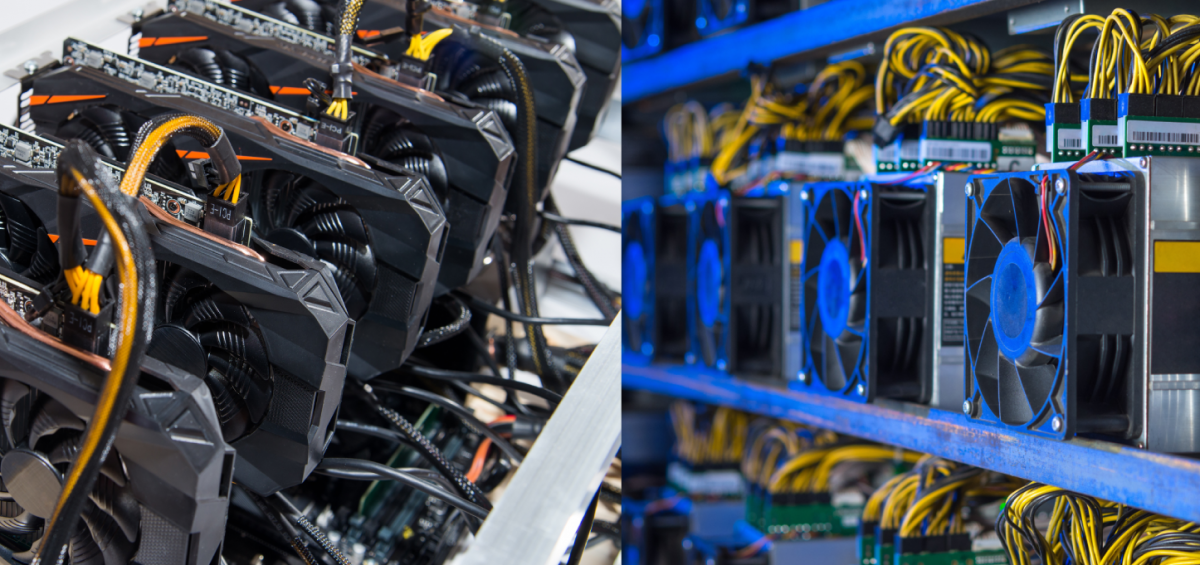
It is worth noting that the price of ASIC miners and Bitcoin-related GPUs can vary over time depending on supply and demand. During market downturns, the need for mining equipment can decrease, resulting in cheaper prices.
Electricity Consumption
When choosing a mining rig, the daily cost of running the equipment should also be taken into consideration; this involves calculating the potential electricity consumption. Due to the level of computing power required, the amount of electricity consumed from mining rigs is far higher when compared with regular computers. In addition, mining rigs need to be operational all of the time to stand a chance of earning BTC block rewards. This means all equipment requires consistent power.
A top-of-the-range Antminer S19 Pro ASIC miner consumes 3250 W per hour or 78 kWh per day. On the lower end of the spectrum, the EVGA GeoForce GPU, utilizes 300 W per hour or 7.2 kWh per day. According to the EIA, an average US residential home burns through 890 kWh per month, which means that even a modest GPU unit will significantly add to the cost of electricity bills. As the prominent operating expenditure, determining electricity costs is extremely important when estimating profits.
Mining Software
Before a mining rig can begin sacrificing computing power to the Bitcoin blockchain, it must first connect to the blockchain using specialist mining software. Fortunately, most mining software can be downloaded for free and, therefore, should not impact the bottom line of mining operations.
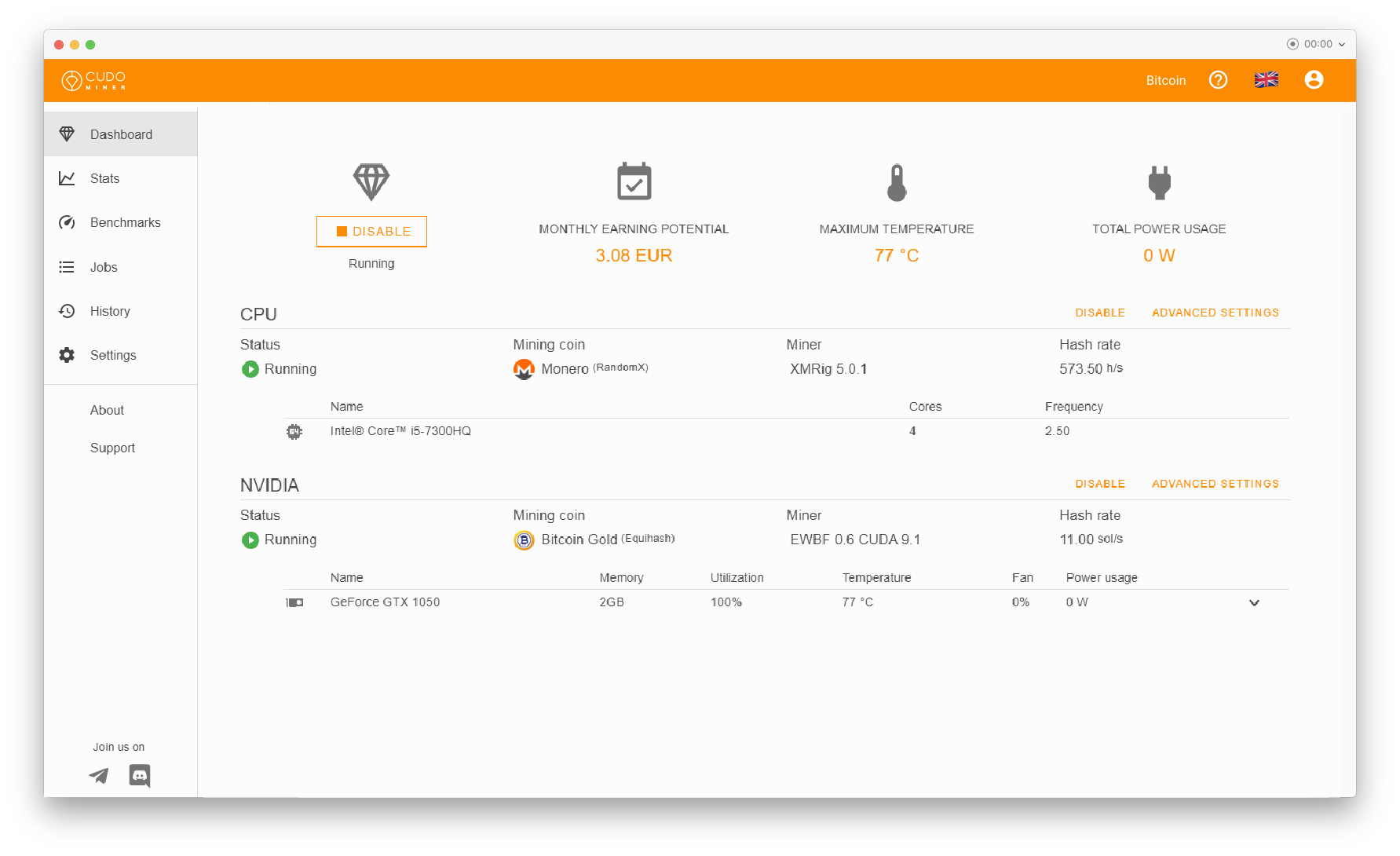
The key consideration for mining software is user experience. Some mining software programs are extremely user-friendly and are geared to inexperienced users. These systems help to get mining rigs up and running as quickly as possible. However, customization is often sacrificed for ease of use. For those looking for complete control advanced technical software is also readily available. Some of the best mining software platforms we've reviewed include CGMiner, MultiMiner, NiceHash, and EasyMiner.
For a full review of the 10 best mining software platforms, read this article.
Calculate Profitability
Bitcoin mining calculators are among the best tools for determining the profitability of a Bitcoin mining operation. Users can input details of a chosen mining rig, the hash rate output, the power consumed, and the local cost of electricity. Many also include inputs for additional costs, such as the percentage fee charged by the BTC pools.
Related: How much is a Bitcoin transaction fee?
For example, let’s imagine that a new miner chooses to invest in a high-end GPU to mine Bitcoin. They choose the NVIDIA GeForce RTX 3090 which outputs 121 MH/s. The GPU consumes 7.2 kWh per day. The miner lives in the US where electricity costs an average of $0.16 per kWh. As a result, the cost to run the GPU for a year is calculated as $394.20 (($0.15 X 7.2) X 365).
By inputting the details of the mining rig into a Bitcoin mining calculator, such as NiceHash, the calculator suggests that the GPU can earn $1.84 per day. This equates to an income of $671.60 per year and an overall profit of $277.40. While this is a great side income, the cost of an NVIDIA RTX 3090 GPU is $1500, which means that the rig would only break even after 6 years.
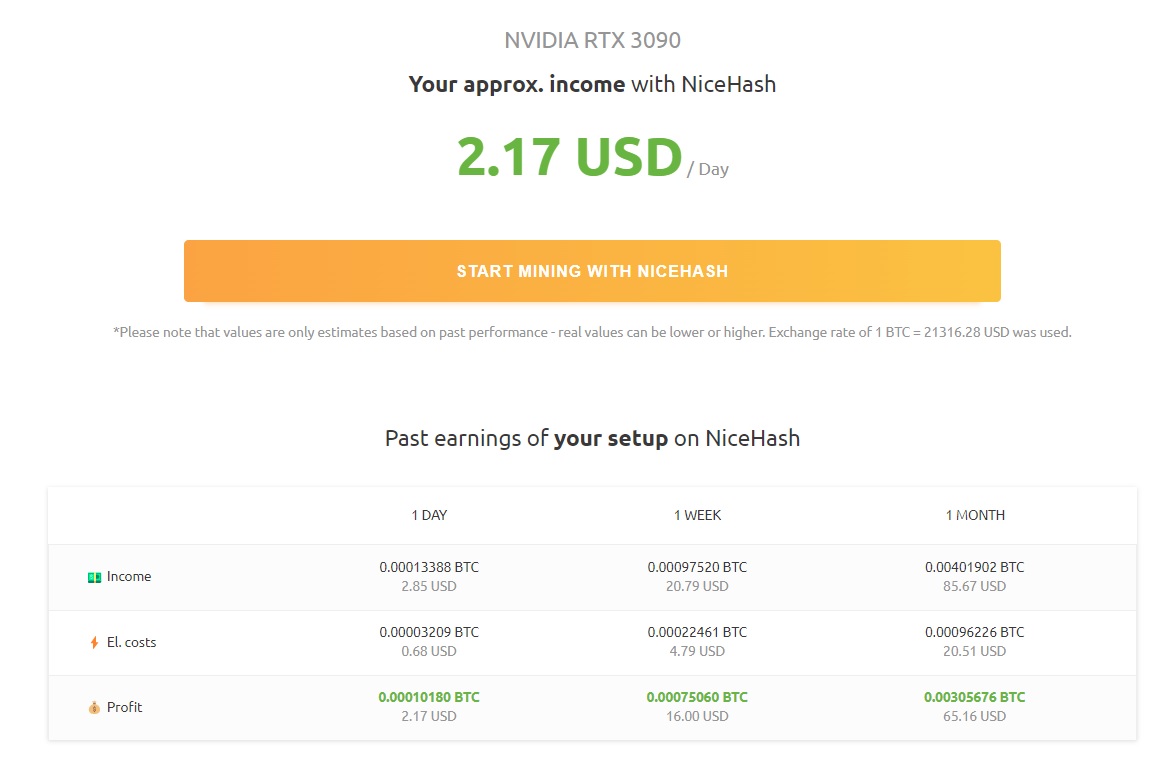
Although Bitcoin mining calculators are useful for initial due diligence, it is worth bearing in mind that there is a range of other factors that can influence the profitability of mining. These include:
- Variations in electrical costs
- Variations in the price of Bitcoin
- Changes to Bitcoin mining difficulty
- Fluctuations in mining hardware prices
- Mining pool fees
- Future Bitcoin halving events
Step 2 – Choose A Mining Rig
The due diligence performed in step 1 should have provided a good estimate for the type of mining rig that can provide optimum results. However, before committing to a miner, make sure that each of these factors has been evaluated:
- Price and shipping costs. Regardless of whether choosing an ASIC or GPU mining rig, the price for the unit will have a significant impact on how long it takes for a miner to break even. The newer the unit, the more efficient it will likely be. However, modern units will be more expensive and, therefore, require more BTC to break even. It is also important to factor in additional costs such as shipping, import fees, and any costs associated with improving the environment of a mining rig, like a cooling system or noise-filtering equipment.
- Hash rate. The hash rate output is the second most prominent factor to consider. The higher the hash rate, the quicker a miner can attempt to solve the Bitcoin mining algorithm and accumulate more BTC rewards. The hash rate is often provided in Terra hashes per second (Th/s) for ASIC units or in Meta hashes per second (Mh/s) for GPUs.
- Electrical consumption. Typically provided in Watts/hour (W), electrical consumption determines the operating costs of a rig. The higher the Watt consumption, the more expensive the electrical costs will be. Electricity prices are most commonly provided in Kilowatt hours (kWh). To convert from W to kWh, multiply the W by the number of hours of operational time per day (usually 24 hours for Bitcoin mining). That number can then be divided by 1000 to produce kWh. For example, if an ASIC miner consumes 3250 W, the kWh per day would be 78 ((3250 x 24)/1000)
Bitcoin mining rig types
- ASICs. When it comes to ASIC units, Bitmain and MicroBT dominate the market. These companies have provided some of the most reliable and efficient miners to date. However, due to their leading market position, the devices built by these manufacturers command slightly higher prices than other brands. Some of the most popular Bitcoin miners from these two brands include the Bitmain Antminer S19 and the MicroBT Whatsminer M30S. Although these two machines are some of the most popular, both manufacturers have other models available. Cheaper Bitcoin mining manufacturers also include Bitfury, Canann, and Ebang.
- GPUs. NVIDIA and AMD offer the best GPUs when it comes to Bitcoin mining. As a result of their experience and dominance within the traditional graphics processing sector, NVIDIA and AMD now produce some of the most reliable GPUs that are equipped for Bitcoin mining. The graphics cards produced by these companies are fitted within many of the top gaming computers. However, that power can also be harnessed to earn BTC. The GeoForce series is the most popular range of GPUs produced by NVIDIA, whereas the Radeon series is the most popular range of GPUs produced by AMD.
Step 3 – Choose And Install Mining Software
There is a broad range of Bitcoin mining software. However, not all mining software may be applicable to all regions. When comparing different options here are a few key factors to consider:
- User-friendliness. For those new to Bitcoin mining, this could be a deciding factor. Some mining software is designed with user-friendliness in mind, while others require a complex understanding of Bitcoin mining technology. It is best to look at customer reviews to determine whether the software is better suited to a certain level of experience.
- Operating system. Most Bitcoin mining software is only compatible with one operating system. Check whether the software works with Windows, Linux, or Mac before downloading.
- Cost. While the majority of Bitcoin mining software is free to download and install, there may be additional features that incur a charge. All internal pricing should be listed clearly on the associated software website
- Mining pool requirements. Some Bitcoin pools require specific mining software. The process of Bitcoin mining via a pool is far easier when using a recommended software provider.
Once mining software has been selected, it should then be downloaded and installed onto a computer. Search for the downloads section of the chosen mining software provider and download the necessary files. After the download is complete, follow the prompts and choose where to install the software.
After mining software has been chosen and installed, the software will need to be configured with the chosen ASIC or GPU hardware. While some may only require a few short clicks, others may require more a complex process to optimize. The majority of mining software will anticipate the optimum settings for specific mining rigs, however, some platforms do allow miners to enter this information manually.
Step 4 – Create a Bitcoin wallet
To receive those rewards an individual will require a Bitcoin wallet. To keep mining activity separate from other cryptocurrency investments, it can be useful to create a dedicated Bitcoin mining wallet. For the best security, purchase a hardware wallet that can be kept offline.
Step 5 – Choose And Connect To A Mining Pool
To have a chance of competing individually, Bitcoin miners will need to find and join a Bitcoin mining pool. The pool shares all Bitcoin mining hash power and allows individuals to receive consistent, reliable profits. However, it is important to understand that not all pools are built the same. Pools can vary based on size, payout methods, and fees.
- Size. The size of a pool is determined by the cumulative amount of hash power that the pool dedicates to the Bitcoin blockchain. The higher the hash rate, the more likely it is the pool will find rewards. However, if there are more individuals, the rewards may also be lower.
- Fees. Bitcoin pools are run by operators and provide an efficient and cost-effective way to earn mining rewards. As a result, most mining pools charge fees that are subtracted from BTC block rewards. Fees can range from 0% up to 4% depending on the size and payment method of the pool.
- Payout methods. The payout method for most Bitcoin pools is determined by shares. Shares are defined as the amount of mining power an individual miner combines with a pool. Typically, the higher the mining power, the more rewards are earned. However, there are several methods for the distribution of rewards. These include:
| Payout Type | Description |
|---|---|
| Pay-Per-Share (PPS) | PPS is a payment method where miners get paid regardless of whether a BTC block reward is found. |
| Full-Pay-Per-Share (FPPS) | FPPS is a payment method that allows miners to get paid regardless of whether a BTC block reward is found plus additional transaction fees. |
| Pay-Per-Last-N-Shares (PPLNS) | PPLNS is a payment method where miners are only rewarded once a BTC block reward is found. |
Before BTC block rewards can be received, mining software must be connected to the chosen mining pool. Each pool will provide detailed guides that outline how to connect chosen mining software. As the complexity of connections can vary considerably, most mining pool providers also offer a forum that allows users to ask questions when needed.
Pool operators typically provide a mining pool address, worker name, and password. This will allow the hash rate generated by the miner to be directed to the chosen pool. Mining platforms will also likely require information including the closest geographic region and withdrawal wallet address. Remember to double check the withdrawal wallet address as incorrect addresses will result in lost Bitcoin rewards that are difficult to recover.
Step 6 – Start Mining
After a connection has been made, the rig is ready to earn BTC block rewards. As the process is so complex, it is worth double-checking all connections. Ensure that the mining rig is configured with the mining software and that the mining software is connected to the mining pool. Once up and running, BTC block rewards will automatically distribute between mining pool participants.
Bitcoin Mining Explained for Beginners
All cryptocurrencies, including Bitcoin, are supported by a blockchain. The Bitcoin blockchain, which is best considered a public ledger, is stored on tens of thousands of computer servers worldwide. Every transaction sent across the Bitcoin blockchain must be verified and recorded before BTC transfers. However, the blockchain needs to ensure that each transaction is accurate and immutable.
Each transaction is ordered and then grouped into blocks to ensure that the same cryptocurrencies are not spent twice – known as the double spend problem. To ensure that transactions are then immutable, Bitcoin employs a Proof-of-Work (PoW) consensus mechanism. This is where Bitcoin mining is required.
The PoW protocol requires Bitcoin miners to sacrifice computing power. By proving that a certain level of computing power (work) has been achieved, Bitcoin miners can add the next block to the blockchain. This ensures that each block is immutable. To change a block, an individual would need to sacrifice the same level of computing power for that block plus any other blocks that followed. This makes each block nearly impossible to change. Therefore, Bitcoin mining keeps Bitcoin operational and ensures the blockchain remains decentralized.
This Is How Bitcoin Mining Works
Bitcoin employs a proof-of-work consensus mechanism to ensure the blockchain remains immutable (unchanged). The protocol states that parties wishing to verify transactions and add new blocks to the blockchain must prove that a certain level of ‘work’ has been sacrificed. In Bitcoin, computing power must be sacrificed to solve a mining algorithm. The more power a user can sacrifice, the more chance they have of solving the mining algorithm first.
When a miner solves the algorithm, they are allowed to add the next group of transactions (block) to the Bitcoin network. The miner is rewarded with a BTC block reward for accurately verifying and recording all transactions. The current block reward for validating a block is 6.25 BTC. However, due to Bitcoin’s preprogrammed halving event, the mining rewards are expected to halve to 3.125 BTC in 2024.
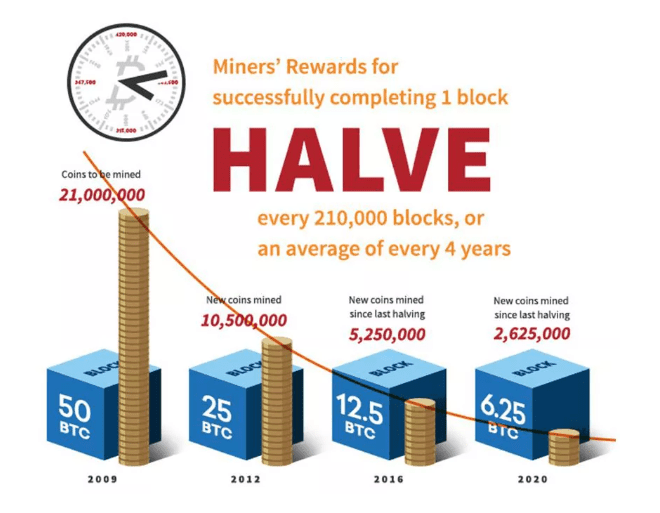
The Different Types of Bitcoin Mining
For several years after Bitcoin’s release, mining Bitcoin could be completed with home computers. However, due to the interest from businesses, most individual miners can no longer compete with regular computing equipment. As a result, Bitcoin miners often turn to Bitcoin mining pools or cloud mining solutions.
GPU Mining
Although it is rare, Bitcoin can still be mined using a Graphic Processing Unit (GPU). Thanks to the Arithmetic Logic Unit (ALU) built within most GPUs, advanced laptops and computers can solve the complex algorithms required by the Bitcoin blockchain.
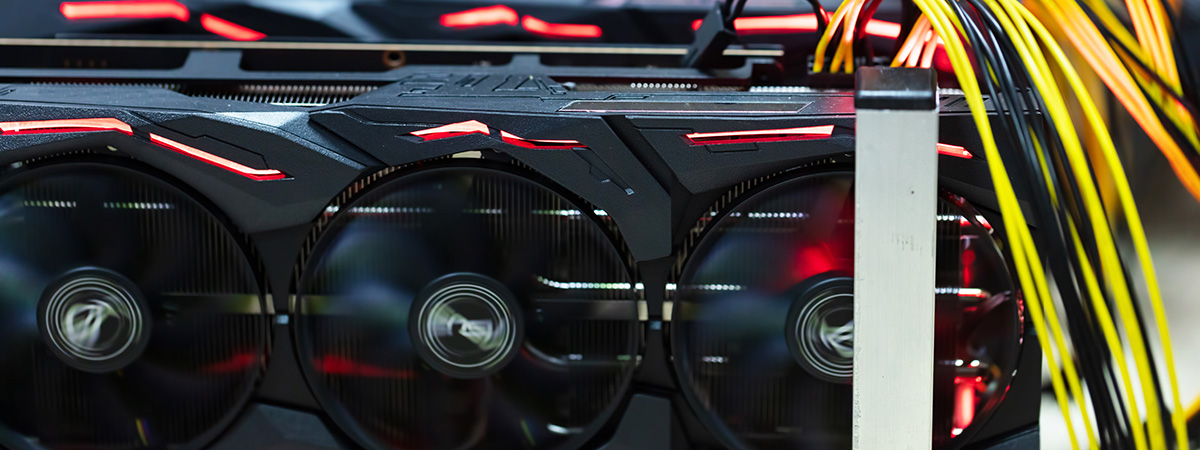
However, due to the increase in Bitcoin mining difficulty, most GPUs are no longer efficient and more susceptible to GPU damage with constant mining. To overcome the advances in difficulty, most individuals now turn to Application-Specific Integrated Circuits (ASICs). ASICs were specifically designed to tackle the Bitcoin mining algorithm, meaning they can complete the process far more quickly. Computing output is far higher for the energy required, but ASIC mining rigs can require a higher upfront capital investment, which can become expensive for hobby miners.
To learn how to build an ASIC mining rig and what components are required, read this article next which explains how to make a DIY miner.
Bitcoin mining pools
Unless a solo Bitcoin miner can afford thousands of mining rigs, most individuals now turn to Bitcoin mining pools to compete. Bitcoin pools consolidate the hash rate (computing power) produced by individuals so that the pool has a better chance of competing with larger mining farms and businesses. Any Bitcoin block rewards are then shared among participants. Although payout methods can vary, most pools abide by the rule that the more hash rate contributed to a pool, the larger the percentage payout. For a complete guide and list of our top Bitcoin mining pools, read this article.
Cloud mining
Bitcoin mining farms can generate BTC block rewards on their own, and many now also offer the opportunity to lease ASIC mining rigs. This option is particularly useful for those without the capacity to own and store their mining rig.
Another benefit of cloud mining is that it removes much of the technical knowledge required to get a mining rig up and running. The operations of the mining rig are all handled by the cloud mining operator. The higher the hash power required, the higher the costs will be. While an easy option, it is worth bearing in mind that many of the top cloud mining companies can take several years until they start making a profit for the individual.
What To Consider Before Setting Up A Mining Rig
Although the economic aspects of establishing a Bitcoin mining rig are important, both economic and environmental factors need to be considered. Mining rigs require consistent cheap power, a stable Internet connection, a way to remove heat, and a way to reduce noise.
- Power requirements. Many ASIC miners require a 220V access point. Unfortunately, the standard outlet in most residential homes only allows for 110V. If a 220V access point is unavailable, a qualified electrician may be required to fit one, which can increase upfront capital costs.
- Stable Internet. A stable Internet connection is required to connect with the Bitcoin blockchain. While Bitcoin transactional data can be sent via other means, the Internet is the most efficient. Although wireless connections are more convenient, connecting mining equipment via an Ethernet cable often provides the most stable results.
- Cooling. All electrical devices produce heat. However, due to the computing power required to mine Bitcoin, ASIC miners generate excess heat. To work efficiently, devices must be kept as cool as possible, which may involve introducing a secondary system that can circulate air. In certain locations, the heat produced by a Bitcoin miner can be used to warm other parts of a home.
- Noise reduction. Unfortunately, in addition to producing immense amounts of heat, most ASIC miners are also incredibly loud. Some hardware can produce noise equivalent to a lawn mower, which could easily disturb family life or neighbors, especially if running 24/7. Many solo miners purchase noise-insulating containers to place hardware inside to overcome this. However, again, this can increase upfront capital costs.
As the factors above show, the environment for Bitcoin mining can also significantly impact profitability. If accommodating the factors above is difficult, individuals might find cloud mining a more suitable solution.
Bitcoin Mining May Not Be Worth It For You
Bitcoin mining is not a feasible venture for everyone. Although it offers a way to make money and support the Bitcoin blockchain, capital costs are high, and there is no guarantee of instant profits. Let’s review the key pros and cons to determine if Bitcoin mining is right for you.
Pros of mining Bitcoin:
- Individuals mining Bitcoin ensure that the blockchain remains operational and decentralized. The more miners in the network, the more secure the network becomes. If you believe in the future of Bitcoin and cryptocurrencies, becoming a Bitcoin miner could be a great way to support the industry.
- Alongside helping support the Bitcoin blockchain, profits are one of the main incentives for miners. Bitcoin miners need to ensure that BTC rewards will cover the costs involved.
Cons of mining Bitcoin:
- Profitable Bitcoin mining requires purpose-built ASIC mining hardware. Although secondhand units can be purchased cheaper, basic models start from approximately $2,000. Setting up a mining rig at home and providing power to the unit could also incur additional costs.
- Profits from mining Bitcoin are distributed as BTC block rewards. Mining profitability, therefore, depends on the price of BTC. Some Bitcoin miners may choose to sell BTC profits instantly, while others may choose to hold BTC for the long term. Regardless of the portfolio strategy, Bitcoin is one of the most volatile markets in the world, and profitability depends on Bitcoin market prices.
- Due to increasing competition, individual Bitcoin miners will find it near impossible to solve a Bitcoin hash function independently and, therefore, collect a full BTC block reward. More commonly, Bitcoin miners must pool resources together, meaning BTC block rewards must also be shared.
It's Difficult To Make Bitcoin Mining Profitable
The days of instant Bitcoin mining profits are long gone. However, generating extra revenue from a strategic Bitcoin mining operation is still possible. Crucially, the profitability of Bitcoin mining depends on several key factors. Hardware and power are the two largest costs for Bitcoin miners. As a result, these components have the largest bearing on profitability and how long it will take to mine 1 Bitcoin.
- Hardware. Starting with ASIC miners, these machines can cost anywhere from $2,000 to $15,000. The more expensive the unit, the more capital expenditure is required upfront. However, expensive units benefit from higher hash power, so BTC block rewards can accumulate quickly. The capital expenditure should be compared against the average daily profit to calculate the number of days to break even. For example, if an ASIC mining rig costs $2,000 and generates an average profit of $10 per day, the machine would break even after 200 days (without considering the cost of electricity).
- Electricity. In addition to hardware expenses, electric power is the major operating expenditure for Bitcoin miners. The cost of electricity varies throughout the world but averages between $0.03-$0.06 /kWh. According to experts in the Bitcoin mining field, if electricity costs more than $0.06, it can be difficult to mine profitably.
Frequently Asked Questions
How much Bitcoin is earned per block reward?
When Bitcoin was first released in 2009, 50 BTC were awarded for each new block added to the blockchain. However, the BTC block reward is programmed to halve every 4 years. After 3 halving events, the current block reward for miners stands at 6.25 BTC.
How much Bitcoin can you mine in a day?
The amount of BTC mined per day depends on the amount of mining power produced by a mining rig. The higher the mining hash rate, the more likely it is BTC block rewards will be found. The lower the mining hash rate, the less likely block rewards will be found. According to the CoinWarz profitability calculator, at the time of writing, a mining rig producing 120 TH/s would produce 0.00053550 BTC per day.
What is a hash function?
The algorithm that Bitcoin miners need to solve is better known as the hash function. The hash function receives data regarding Bitcoin transactions and cryptographically generates a string of random characters. To uncover the transactional data and add it to the blockchain, the hash function algorithm must be solved.
